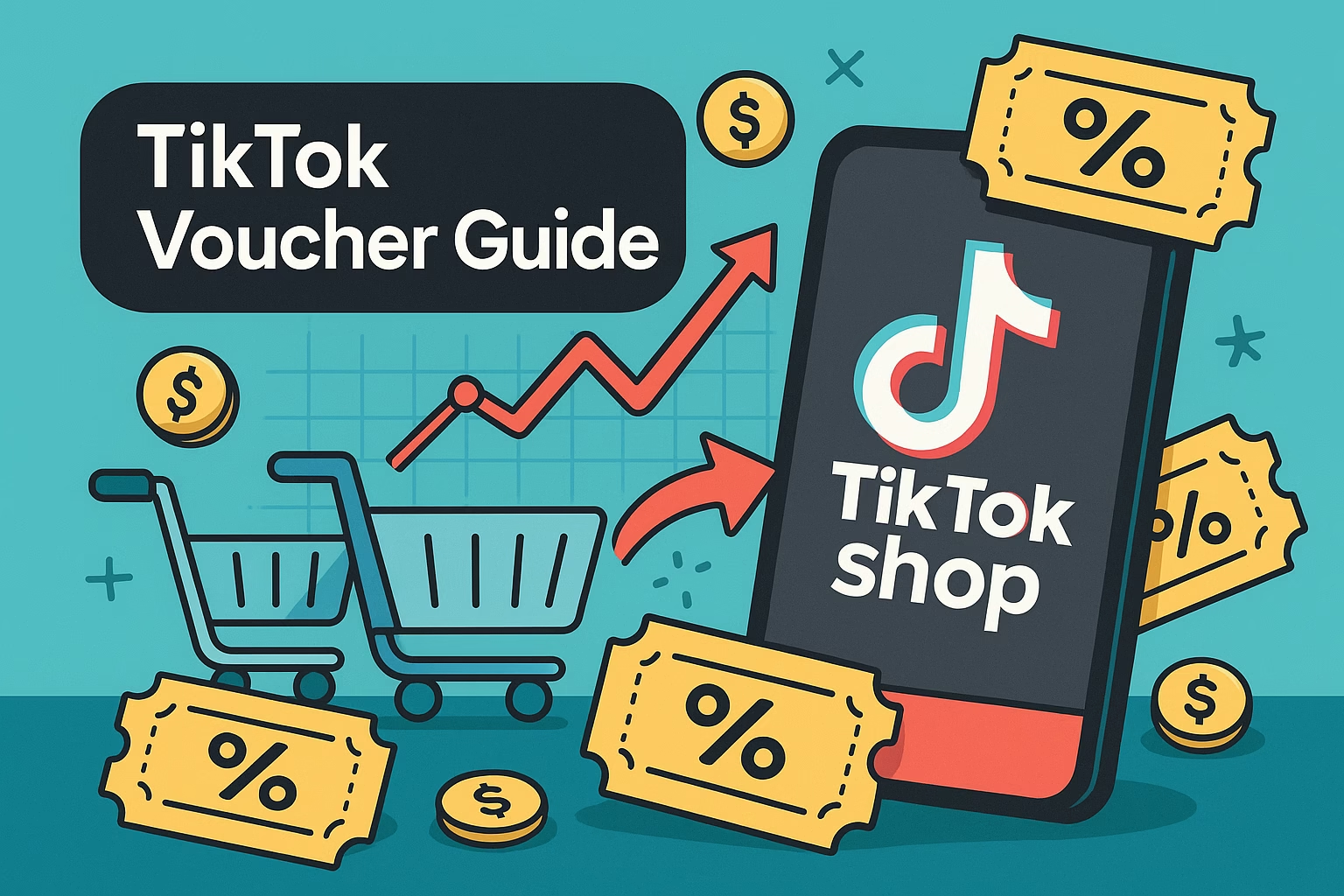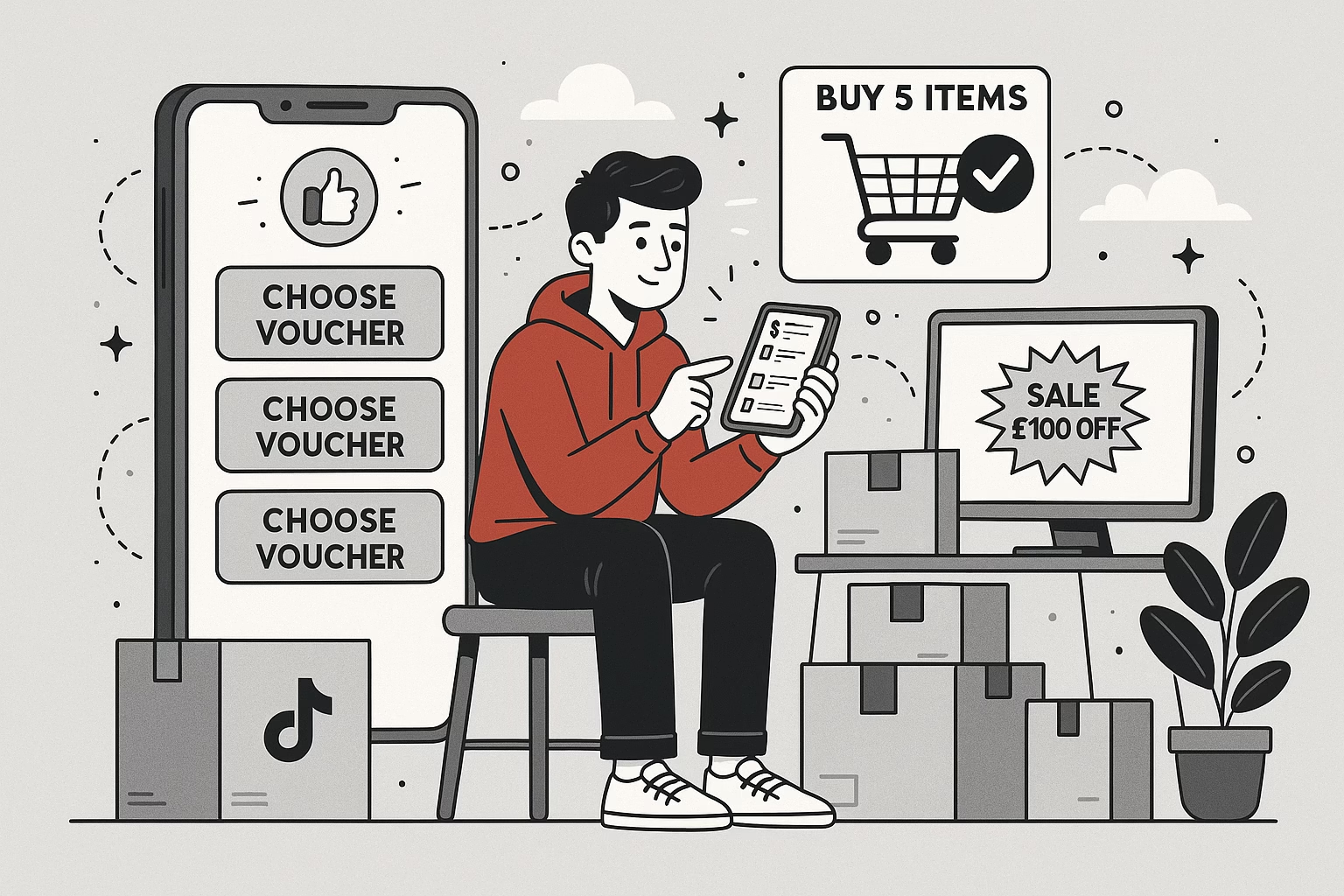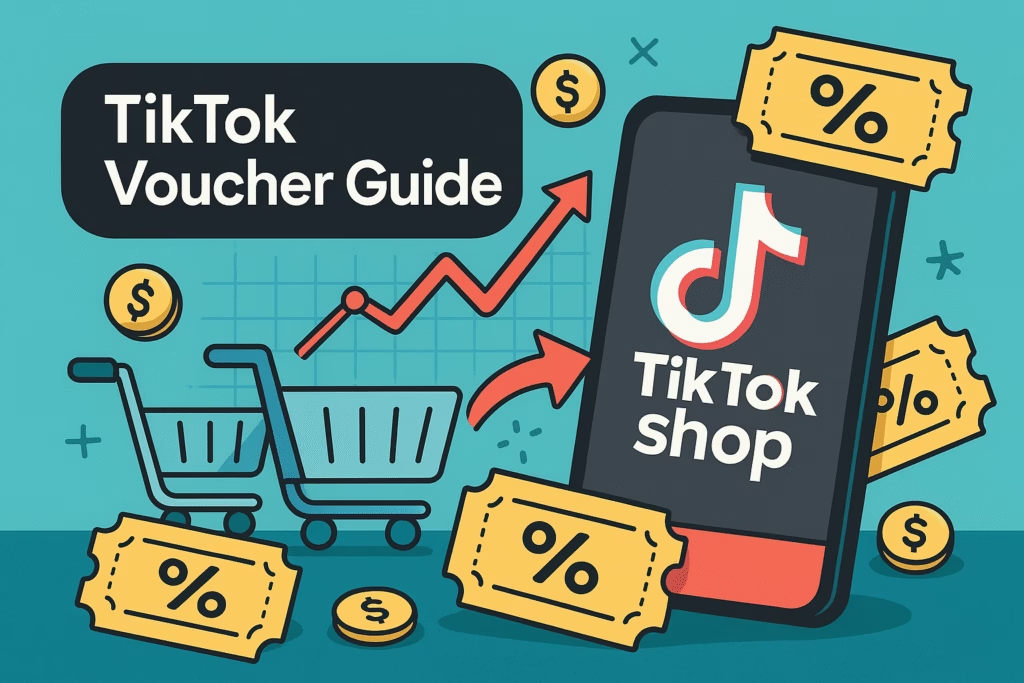TikTok doesn’t want you to read this.
A user recently dropped the clearest, most brutally honest breakdown of how TikTok vouchers really work — exposing a system that feels less like a shopping platform and more like behavioral training in disguise.

The post was casual.
The insights?
Invaluable.
Let’s break it down properly, without buzzwords, and with full honesty.
The Thread That Pulled Back the Curtain
A determined shopper shared their experience with TikTok Shop, building a comprehensive guide that collectors, deal hunters, and everyday buyers are quietly adopting.
This guide isn’t just about catching discounts.
It’s about understanding the calculated moves TikTok makes to manipulate your behavior and learning how to use that system to your advantage without getting caught in their trap.
What TikTok Won’t Tell You About Their Vouchers
The voucher system runs on two pillars: ritual and randomness.
You don’t automatically get discounts.
You have to trigger them.
The “game” works like this:
Open TikTok Shop during prime periods (mainly Fridays to Sundays).
Buy five random low-ticket items.
Wait for the “mystery box” offer.
TikTok isn’t handing you savings because they like you.
They’re conditioning you.
Each week you chase vouchers, you reinforce a habit loop that benefits them, not you.
The Blueprint to Trigger TikTok Vouchers

Here’s how smart users consistently unlock vouchers:
Launch TikTok Shop Friday to Sunday (early morning to late afternoon).
Watch for the “Choose 1 of 3” voucher pop-up.
Purchase five cheap filler items (think keychains, card sleeves, zip ties).
Secure your voucher bundle.
Sometimes, repeat the sequence if the system resets your eligibility.
It’s systematic.
But don’t confuse simplicity with safety.
There are hidden risks too.
The Trap TikTok Doesn’t Warn You About
Cancelling too many of your filler purchases flags your account.
Some users cancel a few times with no blowback.
Others — like the original poster — found themselves soft-banned from the shop for over a month.
It’s a black hole.
If you gamble with order cancellations, you are betting your entire TikTok Shop access on TikTok’s notoriously random enforcement.
It’s simply not worth the risk.
Buy cheap.
Accept the loss.
Play the long game.
Breaking Down the Voucher Values
Typical voucher drops total around £100 split into tiers: £40 off £100, £30 off £80, £15 off £50, £10 off £40, and £5 off £30.
Sometimes, during rare promotional periods, TikTok boosts the stakes: £50 off £140 and £80 off £200.
Prices on TikTok Shop quietly inflate during voucher events.
The cheaper discounts (£5-£10) often get eaten up by artificial price increases.
Only the higher-tier vouchers (£40+ off) deliver actual savings worth chasing.
The illusion of value is just that — an illusion — unless you are deliberate.
How Smart Buyers Flip the System
Not everyone is there to hoard products.
The savvier crowd turns TikTok’s scheme into their personal cashback machine.
Use high-value vouchers on sealed booster boxes or larger ticket items.
Sell the products on eBay at competitive, fair-market rates.
Recycle the profit into future purchases without touching your bank account.
This isn’t scalping.
It’s value recovery.
And it’s how hobbyists fund their collections without going broke.
Items You Should Avoid Buying
If you’re trying to maximize value, steer clear of:
Single booster packs — many are resealed or weighed.
Low voucher brackets (£5-£10 discounts).
Sellers without clear histories or detailed reviews.
Anything that smells risky probably is.
How Sellers Are Gaming Buyers
TikTok sellers are two steps ahead.
They understand that when voucher seasons hit, users spend with urgency, not intelligence.
They pad their prices by 5-15%.
Enough that a naive buyer still believes they’re getting a deal.
Example:
That “£100” box you just grabbed for £60?
Last week it was £80, no voucher required.
Platforms like Temu perfected this dance.
TikTok simply copied it for a different audience.
Only sharp buyers who cross-reference prices escape this inflated vortex.
How to Vet Sellers Without Getting Scammed
Here’s the sanity checklist before you ever hit “Buy Now”:
Sales Volume: Does the shop have 100+ completed sales?
Real Reviews: Are there legitimate video unboxings or genuine customer feedback?
Pricing Logic: Are prices in line with other marketplaces?
If even one of those boxes isn’t ticked, walk away.
No deal is worth getting ripped off.
Reliable vendors consistently mentioned by smart buyers include:
Chaos Cards, Collectors Kingdom, Thunderbolt Cards, WiggysCollectables, and others that pass the smell test.
Why Knowing the Game Matters
TikTok doesn’t design these promotions to lose money.
They engineer them to:
Create micro-loyalties (repeat customers trained on shopping triggers).
Inflate engagement numbers (metrics for ad buyers).
Disguise average order value increases (you think you’re spending less, you’re often spending more).
When you see through it, you stop being a statistic on their dashboard.
You become a calculated player in your own right.
Quick Tactical Reminders

- Log into TikTok Shop Friday-Sunday mornings.
- Always buy 5 qualifying items (even junk) to trigger vouchers.
- Avoid cancelling unless absolutely necessary.
- Focus voucher use on £40+ thresholds.
- Always price compare with external stores like eBay.
- Only trust sellers with verifiable sales history.
- Favor sealed booster boxes, avoid loose packs.
- Use occasional resale to fund future purchases.
Play smart, not impulsively.
Bigger Lessons Beyond Vouchers
The real story isn’t just how to save £40.
It’s a glimpse into how digital platforms mold behavior using manufactured scarcity, manufactured urgency, and manufactured reward.
TikTok Shop is a digital casino.
You win occasionally.
But the house expects to win long-term.
Those who document, adapt, and act strategically are the ones walking away with real value.
Final Word
If you made it this far, you’re already ahead of 90% of TikTok Shop users.
You have the blueprint.
Now you have a choice:
Mindlessly chase deals and fall into engineered spending loops.
Or play the long game, recover value, and actually come out on top.
The system won’t change.
But your strategy can.
Stay sharp.
Stay skeptical.
Shop like a tactician.


